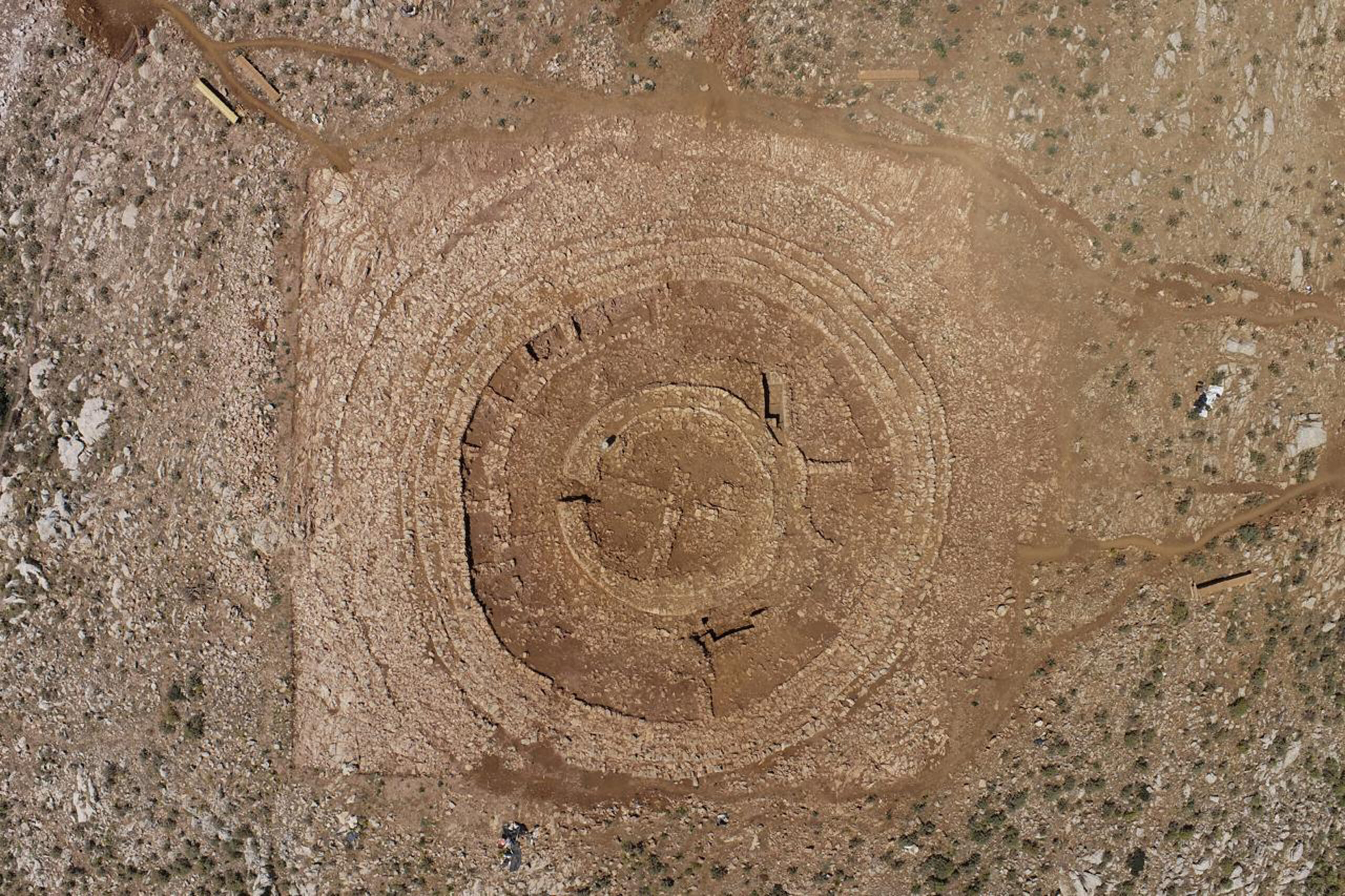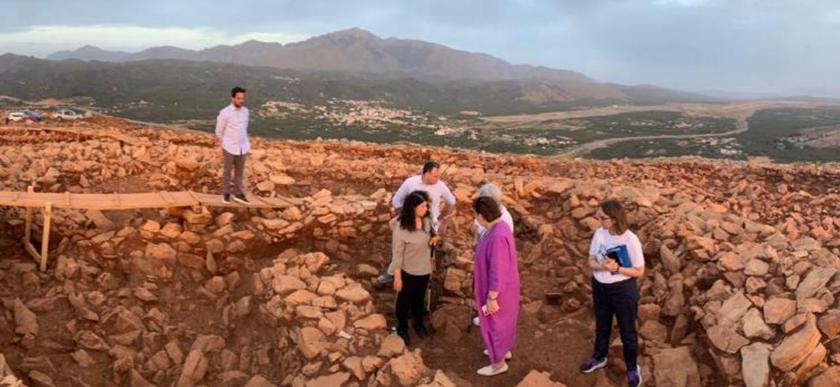
 2024-06-12 20:53:22
2024-06-12 20:53:22
Crete is an island where it is said that all you need to do is stick a shovel into the ground to find ancient artifacts. Apparently, with a bit of luck, you can even find the remains of old buildings. And this is exactly what happened during advanced earthworks for the construction of installations for the new international airport in Kastelli.

A mysterious structure discovered in Kastelli on the top of Papoura Hill
[photo source: Greek Ministry of Culture]
In the place intended for the construction of the radar, a mysterious building was discovered, most likely dating back to the Middle Minoan civilization. This information electrified not only the Cretan media, but also the Greek government, which quickly convened a meeting on this matter. Everyone knows that such finds, although extremely valuable, usually result in suspension of construction works for many months. The monumentality of this building, as well as the fact that nothing similar has been excavated so far, automatically make it the showcase of the new airport in Heraklion.
In the case of this discovery, however, we cannot afford long downtimes in the implementation of this investment, because the airport in Kastelli, when opened in 2027, is to replace the second largest Greek airport in Heraklion and take over tourist traffic. In the future, Kastelli airport is expected to handle up to 18 million travelers annually.
At the meeting, the government was to plan how to continue construction of the airport and at the same time enable archaeologists to continue research. Commenting on this meeting, Minister of Culture Lina Mendoni said that there are solutions that will help complete archaeological excavations and secure the monument. “We all understand the value and importance of cultural heritage… as well as the potential of the new airport project. "The airport can continue to be built while giving the monuments the protection they deserve."
Nevertheless, Mendoni made it clear in her statement that, above all, excavations should continue. Archaeologists must examine the find, interpret it and, due to its uniqueness, save it for future generations. In practice, this means that the Civil Aviation Service had to start looking for another place to install the radar. It will soon submit its proposals for a new location for these devices.
Northwest of the town of Kastelli, a building with a circular shape unique to Minoan archeology was discovered on the top of Papoura Hill. Its diameter is approximately 48 meters and the entire area covers a total area of approximately 1,800 square meters. This discovery is located at the highest point of the hill at an altitude of 494 m above sea level, in a part of the hill expropriated for the purpose of installing radar systems for the new airport.
This monumental structure consists of 8 superimposed stone rings with an average thickness of 1.40 m and a maximum estimated height of 1.7 m. The rings form in the center a circular building (zone A) with a diameter of 15 meters, whose interior, with a diameter of 9 meters, is divided into 4 quarters. Zone A is surrounded by the second main zone (Zone B), where radial walls intersect vertically with the rings of the lower floors, creating smaller spaces. As the excavation progresses, an almost labyrinthine structure is revealed, as the spaces communicate with each other through narrow openings. On the southwest and northwest sides, two possible main entrances to the central zones were revealed.

A view from above of the stone circles forming an intricate labyrinthine structure
[photo source: Greek Ministry of Culture]
The main period of use of the building seems to have been between 2000 and 1700 BC, i.e. it was probably built shortly before or at the beginning of the pre-palatial period. The finding of pottery dating to the period of younger palaces indicates that this building was also used in this later period.
As excavations are still ongoing at this stage, it is not possible to determine the original form or total height of the structure at this time. The buildings in the central zone were probably either truncated cone-shaped or vaulted. The number and type of finds, as well as the presence of large amounts of animal bones, do not indicate - to this day - permanent residential use, but probably periodic ceremonial use. It is certain that it is some kind of social development. This is the first monument of this type to be identified and excavated in Crete. Its size, architectural design and intricate construction required a lot of work and specialized experience from the builders.

Archaeological work at the excavation site in Kastelli
[photo source: Greek Ministry of Culture]
However, the mysterious circular building is not the only archaeological discovery that was made during work on the new airport. So far, 35 other discoveries have been identified and archaeological excavations have been carried out and submitted for further research under an agreement between the Ephorate of Antiquities of Heraklion, the Ministry of Culture and the Ministry of Transport and Infrastructure.
Komentarze
Wypełnij poniższy formularz aby dodać komentarz
lub kliknij w poniższy link aby skorzystać z możliwosci komentowania przez facebooka:
https://www.facebook.com/crete.poland/posts/855128199994779